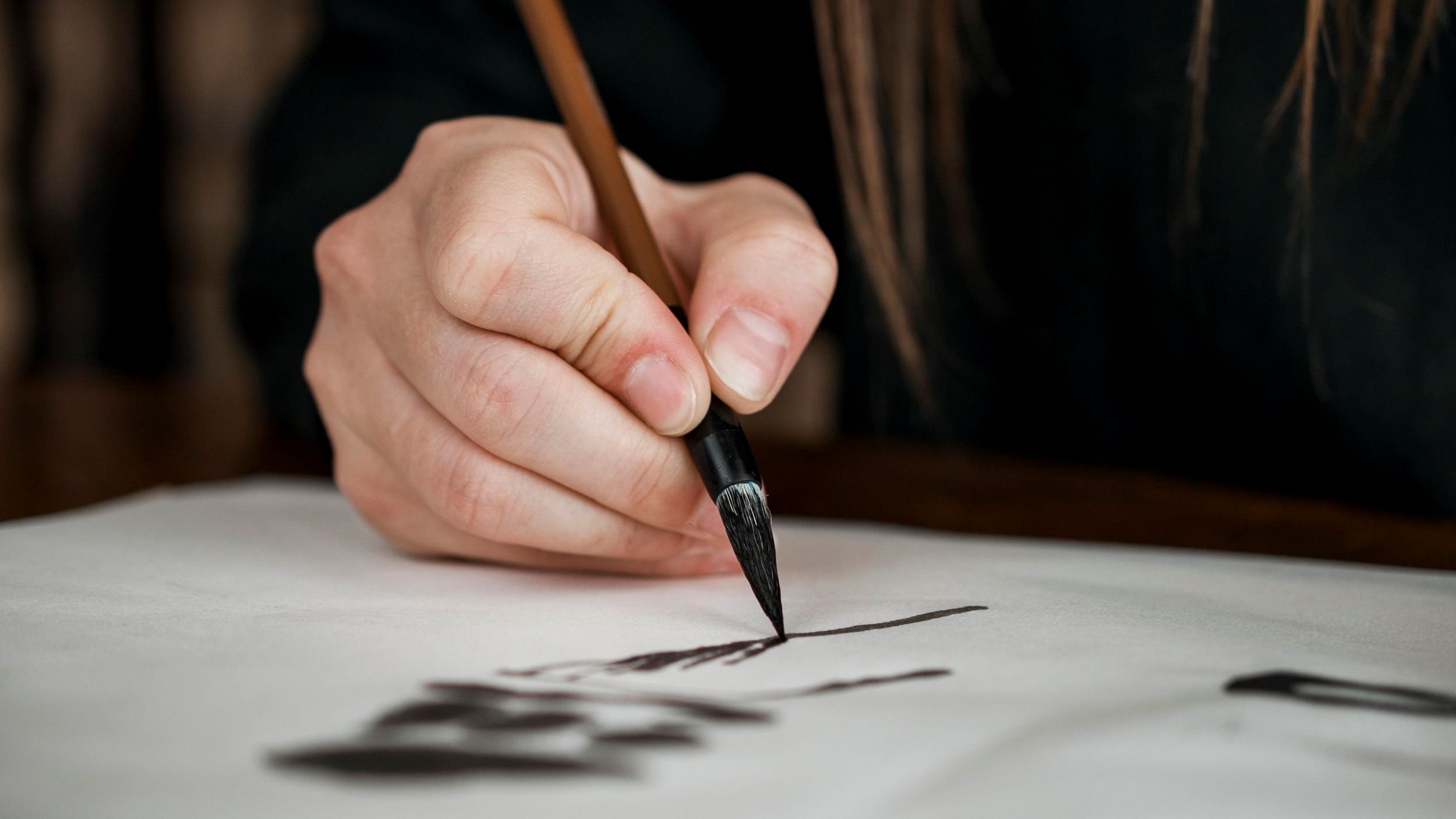
The lovely calligraphy art finds an interesting junction in the technologically driven world of today. For millennia, traditional calligraphy—with its ink-on–paper grace—has existed. Now, though, it has a digital counterpart that lets artists create complex designs with a few clicks. What then truly distinguishes them? Which is your best option? Let’s explore the advantages and drawbacks of both digital and traditional calligraphy so you may choose the one best for your artistic path.
TRADITIONAL CALLIGRAPHY VS. DIGITAL CALLIGRAPHY
Traditional Calligraphy: Pros and Cons
Pros:
- Hands-on Craftsmanship: There’s something incredibly satisfying about traditional calligraphy. Every stroke you make is done by hand, so each piece feels personal and one-of-a-kind. Watching your skills grow as you practice is a rewarding experience, and you get to create something truly special.
- Meditative Process: Many people find the slow, deliberate process of traditional calligraphy to be almost meditative. It’s a chance to unplug, focus, and let the rest of the world melt away for a bit.
- Cultural Heritage: Traditional calligraphy has been around for centuries, connecting you to a rich cultural heritage. When you pick up that pen, you’re participating in an art form that’s been passed down through generations.
Cons:
- Time-Consuming: There’s no rushing traditional calligraphy. It requires patience and precision, which means it might not be the best fit if you’re looking for quick results.
- Costly Supplies: High-quality paper, pens, and ink can be pricey, and since mistakes are inevitable, you might find yourself going through supplies faster than expected.
- Physical Limitations: Hand and wrist fatigue can become a real issue, especially if you’re working on big projects or practicing for long periods.
Digital Calligraphy: Pros and Cons
Pros:
- Versatility and Flexibility: One of the biggest perks of digital calligraphy is how easy it is to make changes. Need to tweak something? No problem—just hit undo or adjust a layer. This makes it ideal for modern needs like creating logos, social media posts, or invitations.
- Easy Distribution: Once your digital piece is done, sharing it is simple. Whether you’re sending files to a client or posting your work online, digital calligraphy makes it super simple to distribute your creations.
- Accessibility of Tools: Unlike traditional calligraphy, which requires specialized tools, digital calligraphy just needs a tablet or even your phone. There are plenty of affordable or free apps and brushes that can mimic the look of traditional work.
Cons:
- Lack of Personal Touch: Some people feel that digital calligraphy lacks the warmth and soul of hand-drawn letters. Without the tactile feel of pen on paper, the art might seem less personal.
- Learning Curve: Getting the hang of digital calligraphy tools like Procreate or Adobe Illustrator can be challenging, especially if you’re new to digital art.
- Over-Reliance on Technology: Your creativity is somewhat tied to the tech you use. Hardware limitations, software glitches, or outdated tools can sometimes get in the way of your artistic flow.
So, Which One’s for You?
Both digital and traditional calligraphy have their unique charm and challenges. If you love the feel of ink on paper and enjoy the slow, meditative process, traditional calligraphy might be your thing. But if you’re all about versatility, speed, and sharing your work with the world, digital calligraphy could be the way to go.
Logo design companies in the UAE, like ours, expertly incorporate digital calligraphy—whether in English or Arabic. We take pride in being the best, and that’s why so many brands choose to work with us.
Want to see the difference we can make? Contact us today!